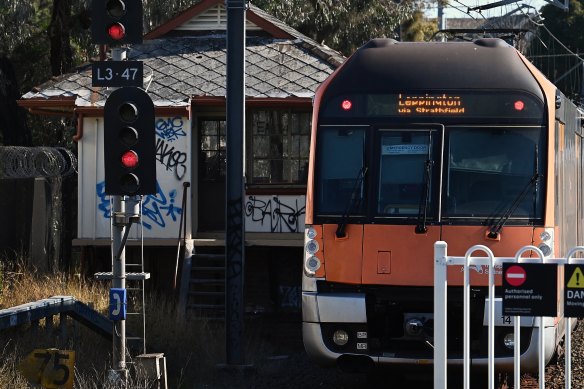Editorial
Trains running red lights is both nightmare and reality in Sydney
It is almost unimaginable to think of trains running red lights. As a deep-seated fear, it is right up there with shark attacks. But it has happened in Sydney at least eight times over the past two years, creating further safety concerns about the rail network.
Government Information (Public Access) data obtained by the state opposition show there were 340 signal passed at danger (SPAD) incidents in 2022-23 and 2023-24 and eight involved trains entering a potential conflict zone, with a chance of collision or derailment, on freight-only lines. There were none the previous year. Another 24 trains passed the red light signal by more than 100 metres, but remained within a safe distance from trains in front.

Last week, major lines were thrown into chaos and plagued by recurring, urgent signal repairs.Credit: Kate Geraghty
The T1 North Shore & Western Line was the worst affected, with 181 incidents, followed by the T4 Eastern Suburbs & Illawarra and T2 Inner West & Leppington Line, with 58 and 45 respectively.
While most resulted from driver error or mechanical failure and posed very little danger to passengers, continuing through red signals has obvious dangers: a coal train ignored a red signal at Beresfield station outside Newcastle in 1997 and ploughed into another stationary coal train, injuring six people including the station master and a commuter.
The running red lights data has come to light as a number of incidents focused attention on the Sydney train network’s potential failings. Last week, major lines were thrown into chaos and plagued by recurring, urgent signal repairs. The result was delayed services and large crowds waiting on platforms. Then a firefighter received an electrical shock during a final evacuation drill for Sydney’s new metro rail line, compounding problems with the new line.
Two days earlier, Transport Minister Jo Haylen announced that the 15.5 kilometres of mostly underground line from Chatswood to Sydenham could not be opened on August 4 as planned. A combination of problems including a lack of final approval from the national regulator, a recent meltdown on a different stretch of line and industrial action from the firefighters’ union, were blamed for the delay.
The latest rash of problems came barely a month after the announcement that 2000 train carriages in NSW’s passenger rail fleet would undergo critical repairs and upgrades to reduce the likelihood of defects inflicting delays and cancellations on commuters. The program is the second stage of Haylen’s near $132 million Rail Repair Plan to reduce widespread defects and incidents across the state’s rail network.
To allay train users’ fears, we repeat that the bulk of incidents revealed in the data presented little risk to commuters. Almost half were trains on routes previously clear with little probability of collision. A spokesman for Haylen said it was expected “every single one” of the incidents had been thoroughly investigated.
That is little reassurance amid the recent transport turmoil, and certainly no substitute for consistently reliable and safe public transport for commuters who daily run the gauntlet of riding the rails of Sydney’s troubled rail network.
Get a weekly wrap of views that will challenge, champion and inform your own. Sign up for our Opinion newsletter.